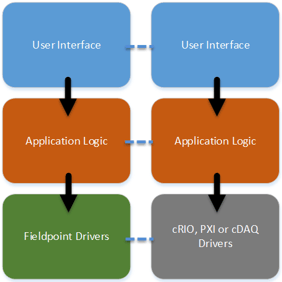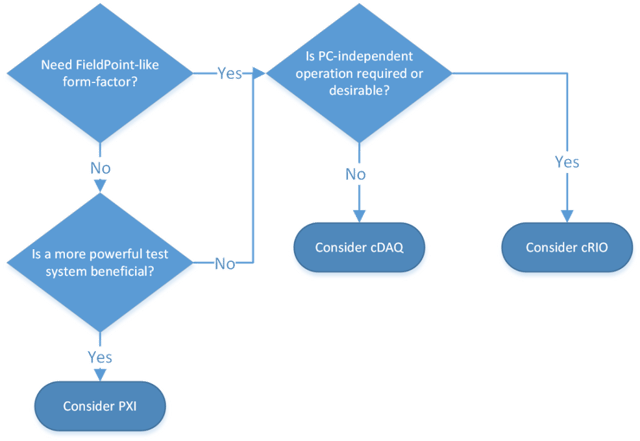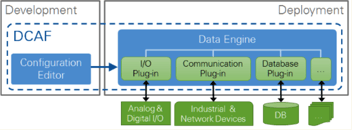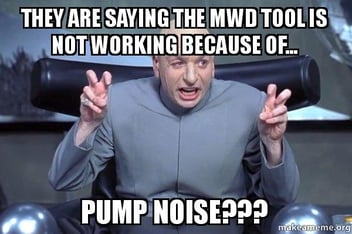It’s the End of Days! (At Least for NI FieldPoint) Are You Ready?
In 2016, National Instruments is ending support for FieldPoint. In other words, FieldPoint software will not be compatible beyond LabVIEW 15 and hardware will be phased out by 2018. National Instruments will no longer sell new FieldPoint or CompactFieldPoint modules.
The NI FieldPoint End-of-Life (EOL) phase-out has important implications for FieldPoint users:
1. NI will no longer officially provide technical support, bug fixes and software upgrades for FieldPoint
2. Replacement or repaired hardware will only be available from third-party vendors
3. Time required to replace parts will increase dramatically
So what exactly does that mean for you? EOL cycles are a natural part of a technology cycle that allows new and better products to replace outdated solutions, but you should anticipate and plan for this event to avoid interruptions to your business. Actively migrating and upgrading a legacy FieldPoint system is necessary, but very achievable.
Fortunately, the FieldPoint replacement options are technologically superior. Erdos Miller is happy to advise you on the best way to handle the end of life process. In many cases, this also offers a great opportunity to not only replace, but also improve and update existing systems to create business value for you and your customers.
Read on to get some tips on the migration process and what it means for your company.
WHAT DOES IT MEAN TO UPGRADE MY SYSTEM FROM NI FIELDPOINT?
As a National Instruments Silver Alliance Partner, Erdos Miller helps companies like yours transition to new hardware while protecting your investment in existing software. Although keeping your existing software is possible (and probably desired), it is common to need a complete overhaul of your code base to make a transition to a new hardware platform. The overhaul of the software to follow hardware abstraction means that future costs in modifying the hardware will be significantly less costly as product life cycles happen all the time.
Let us use a familiar analogy to paint the picture of a FieldPoint software transition—your cell phone. Your number is used by your cell phone but is not attached to the phone itself. You can change your cell phone or change your number but the cell phone won’t limit your ability to change your number and your number won’t limit your ability to change your cell phone. This concept applies to upgrading industrial systems—formally described by something called a Hardware Abstraction Layer (HAL) (more information on HAL design here).
A HAL architecture allows a software program to interact with hardware at an abstract or general level rather than at a detailed level.
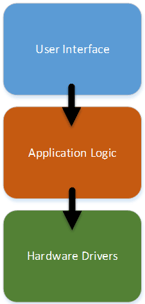 A typical application consists of three logical parts:
A typical application consists of three logical parts:
1. A User Interface, which interacts with end users
2. An application logic section
3. Hardware drivers
HOW MUCH OF MY CODE CAN I KEEP WHILE TRANSITIONING?
All alternatives to FieldPoint require new hardware drivers. Referring to the HAL diagram, the lowest layer of software must change to support the new hardware platform, such as cRIO. An example diagram of this is shown below.
The amount of code you can keep while transitioning from FieldPoint is highly dependent on how well the current codebase follows HAL concepts. If the principles of low coupling and high cohesion are followed and code is highly modular, a larger degree of existing code can be re-used and the transition from FieldPoint will be faster and easier.
In a poorly architected legacy system where I/O is highly coupled to the operation of the UI and other processes, more code changes may be a necessary port to new hardware and more testing will be required to ensure code quality.
HOW DO I CHOOSE REPLACEMENT HARDWARE FOR NI FIELDPOINT?
A variety of new and exciting replacement options exist for FieldPoint, but how do you decide what is best for your system? Choosing a new hardware platform is a critical decision and requires understanding both the system requirements and hardware platforms available. The simple flowchart below should help you compare the three main replacement platforms available from National Instruments:
Choosing a new hardware platform typically requires talking with both internal experts and product experts. We advise customers to research and consider all hardware options carefully before starting a transition. If you have questions, we are here to help.
WHAT NEW FEATURES CAN I ADD TO MY TEST SYSTEM?
When compared to FieldPoint, all modern solutions from National Instruments have compelling and industry-leading features. However, there are distinct differences between the product lines:
cDAQ offers a much more modern and comprehensive data acquisition platform than FieldPoint with new features including:
1. Much faster acquisition rates
2. A greater selection of I/O cards
3. New timing and control capabilities.
4. Advanced networking and internet features
cRIO offers much of the same advantages as cDAQ but introduces two additional capabilities:
A real-time, standalone operating system & FPGA that allow:
1. Accurate hardware and software timing
2. Extremely high data acquisition rates
cRIO-run software applications, which allows:
1. Control code to moved closer to I/O points
2. Reduced need for control code in the user interface application
PXI-based options have a wide variety of new capabilities such as:
1. Powerful embedded control units
2. Highly expandable and diverse I/O
3. Industry leading data throughput rates
HOW DO I GET STARTED?
At Erdos Miller, we believe that well-built software is an investment that provides long-term benefit. A well-designed solution meets current needs and allows smooth transitions to new hardware platforms when needed.
Erdos Miller can leverage our exceptional expertise to help you with your migration from FieldPoint. Our team of Certified LabVIEW Architects are experts on the elements and resources necessary to execute a smooth transition to modern hardware. We take pride in helping our customers from a project concept to final testing and support. Put the task in our hands and we will make it as simple as possible.


